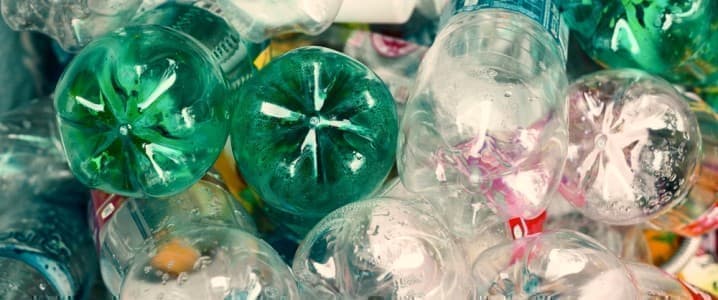We are becoming more and more addicted to plastic with every passing year. Despite efforts to reduce the production of single-use plastics, the global dependence on plastic continues to grow. Global plastic production has increased dramatically over the past century, increasing by about 230 times between 1950 and 2019. According to the OECD, global plastic production doubled between 2000 and 2019, reaching 460 million tonnes. It is expected to almost triple by 2060, reaching 1,231 million tonnes. Meanwhile, only 9% of this plastic is recycled, and about 14 million tonnes end up in the ocean every year. Single-use plastics account for about 40% of plastic production and are a major contributor to waste. In 2019, there were about 353 million tonnes of plastic waste, of which 21% came from the United States, 28% from other OECD countries, 19% from China, and 5% from India.
Plastic production is a major contributor to global greenhouse gas emissions, accounting for around 3.4% of global emissions in 2019. More than 99% of plastics are made from oil, gas and coal, contributing to our continued reliance on fossil fuels despite efforts to reduce their direct use as an energy source. If plastic use continues, plastics could account for 15% of the world’s carbon budget by 2050.
Currently, several governments are trying to reduce our reliance on plastics by introducing policies banning single-use plastic products, pressuring retailers to reduce their use of plastics, and introducing taxes on virgin resins produced from natural resources such as petrochemical feedstocks, crude oil, and natural gas. In the UK, the government will introduce a ban on single-use plastics in 2023, which will include single-use plastic cutlery, balloon sticks, polystyrene cups, and food containers, among other items, with restrictions also being placed on other plastic products. Around 2.7 billion pieces of single-use plastic cutlery and 721 million pieces of disposable plates are used each year in England, most of which are not recycled. The 2023 law builds on previous bans on certain single-use plastics, such as straws. The government now aims to eliminate all avoidable plastic waste by 2042.
In recent years, several other countries have also committed to banning single-use plastics. Bangladesh was the first country to ban plastic bags in 2002, and 130 countries have since introduced similar bans. The United States led the world in banning plastic microbeads, and countries such as the UK, Canada, Taiwan and New Zealand soon followed suit. The Biden administration has called plastic pollution one of the world’s most pressing environmental issues and recently announced plans to phase out purchases of single-use plastics.
This month, the White House announced it plans to introduce the first comprehensive strategy to address plastic use nationwide, aimed at reducing demand for single-use plastic products and creating a market for reusable, recyclable and compostable alternatives. Brenda Mallory, director of the White House Council on Environmental Quality, said the policy “requires unprecedented action at every stage of plastics’ lifecycle.” With its purchasing power, the federal government can also have a significant impact on the supply of these products.
Although the US is keen on new plastic policies, environmentalists criticize that the US is far behind many other major countries in the world when it comes to plastic pollution. For example, only 12 states have introduced plastic bag bans to date. The US produces more plastic waste than any other country, and introducing policies to curb plastic use would have a major impact on the world. The US Environmental Protection Agency is currently planning to regulate per- and polyfluoroalkyl compounds, also known as PFAS or “forever chemicals,” in the manufacture of plastic packaging. The use of plastics in the US is expected to change significantly in the coming decades, but it will depend a lot on who wins the presidential election in November. If Donald Trump returns to the White House, plans to reduce plastic use will likely be halted, potentially halting progress in reducing plastic pollution at the international level.
Nevertheless, more than 170 countries will join the treaty to end plastic pollution in March 2022, and it is expected to come into force by the end of 2024. The treaty deals with the life cycle of plastics, taking into account everything from production to waste management. It aims to promote sustainable production and consumption and encourage a circular economy for plastics. It is hoped that the plastic problem will be solved within a generation. Winnie Lau, director of the Pew Charitable Trusts’ Ocean Plastic Prevention Project, believes that by joining the treaty, “we can solve this problem and reduce 80% of plastic entering the environment by 2040.” Lau adds, “The remaining part will require some innovation, but based on our findings so far, we believe that we can solve the problem.” [this problem is] It can be solved within a generation.”
Article by Felicity Bradstock of Oilprice.com
Other popular articles from Oilprice.com:

